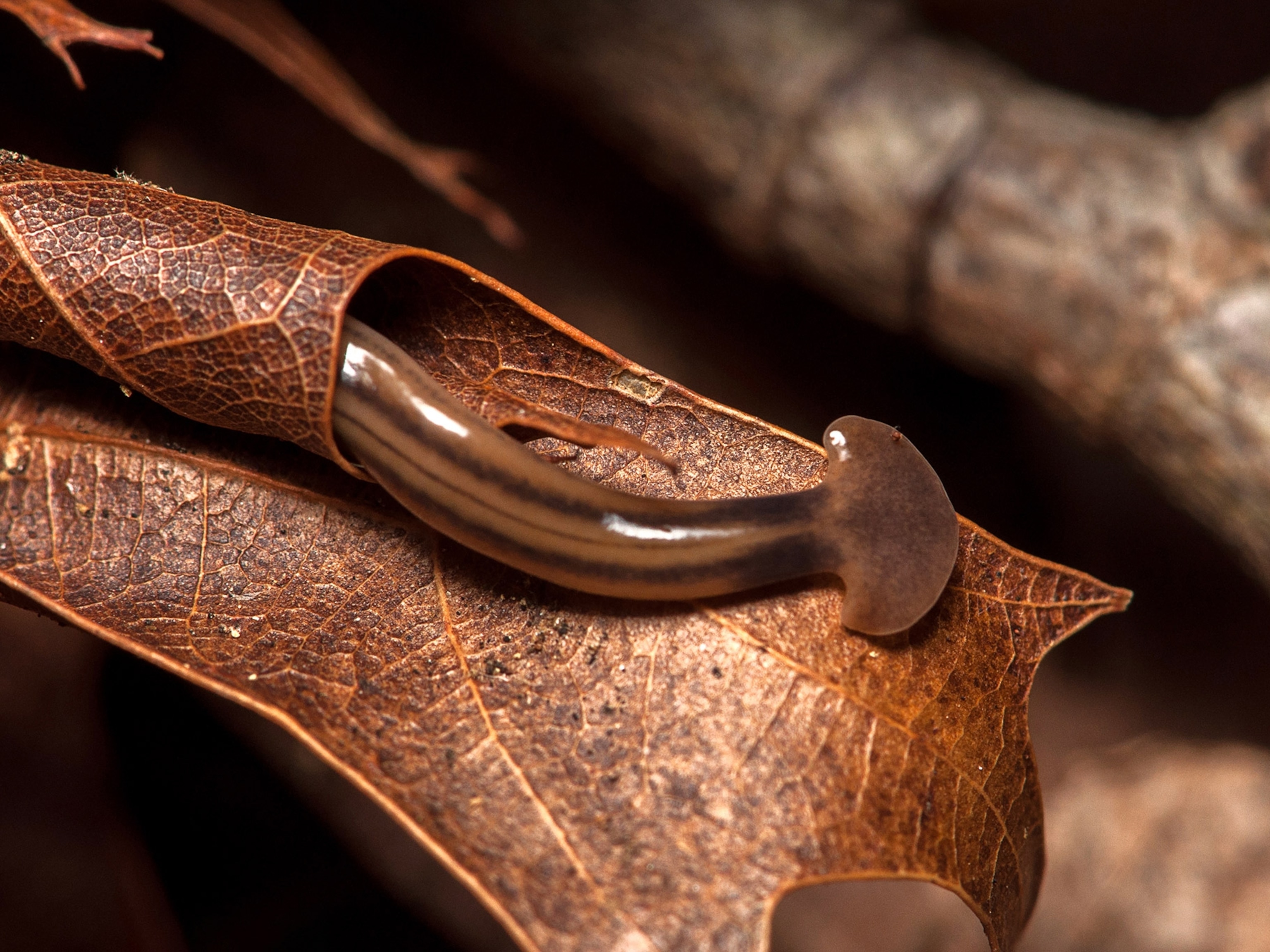
What is an indicator species?
An indicator species is an organism—bacteria, plant, or animal—that reflects the condition of the environment around it. They’re often the first in their ecosystem to be affected by a particular environmental change, such as a warming climate, pollution, human development, and other environmental degradation. By monitoring changes in the behavior, physiology, or number of an indicator species, scientists can monitor the health of its whole environment.
Crayfish, for example, can indicate the quality of freshwater, because changes in water acidity are stressful to them. The health of corals can indicate trends such as seawater rise and sea temperature fluctuation, which in turn are signals of climate change. Peregrine falcons are an indicator of pesticides; DDT, for example, causes their eggshells to thin. Many native plants are indicators of the presence and impact of invasive species For instance, ash trees in the U.S. were the first decimated by invasive emerald ash borer beetles.

To be an effective indicator species—also called a bioindicator—a species should have some key characteristics. Its health should be a bellwether for the health of other species in the same ecosystem; a species that is uniquely vulnerable or struggling makes a poor bioindicator. And any changes it undergoes should be clear and measurable, acting as an early-warning system for broader change. Last, it should respond to change in a predictable way.
Notable indicator species
Amphibians such as frogs and toads are strong indicator species for pollution. They have permeable skin through which they absorb oxygen—and toxins. As a result, they’re extremely sensitive to changes in the quality of air and water. They’re often the first animals, for example, to be affected by pesticide use in or near their ecosystems. Many amphibian populations have plummeted around the world, while others have developed deformities such as extra legs because of pesticides.
Conversely, certain bacteria species thrive where toxins are present, making them bioindicators as well. An overabundance of bacteria can indicate the presence of a toxin in the same way that the absence of frogs does.
Northern spotted owls are a widely studied indicator species. Scientists look to them to get a sense of the overall health of old-growth forest ecosystems and to monitor the effects of human-caused habitat changes. Native to the Pacific Northwest, the owls make their nests in old tree cavities, broken treetops, and abandoned raptor nests, all found in the region’s old-growth forests. But as forests have been cleared for logging, agriculture, and urban development, the owls have lost their nesting sites, and their populations have plummeted. They continue to decline by an average of almost 4 percent each year.
Their decline signals that other species in the forest are likely declining as well and that the forest—and the web of life that sustains it—have been degraded. Similarly, a population of thriving northern spotted owls indicates that an ecosystem is healthy and able to support an array of other plants and animals.

Pikas—small, furry mammals that look like short-eared rabbits—are perfectly adapted to living in harsh high-alpine habitats, which means that even the smallest changes to their environment affect them. That makes them good indicators of global warming.
Instead of hibernating to get through the winter, pikas take cover under rocky debris, relying on the insulation of heavy winter snowpack to keep their dens warm. In the 2000s, researchers began to notice declines in pika populations at lower elevations, especially in the driest parts of the western U.S. This was an alarm bell signaling the climate was warming: Over the past several decades, shorter winters and less snowfall have meant the snowpack melts earlier each spring, reducing the pikas’ insulating blanket of snow cover. That has left them increasingly exposed to cold spring temperatures at a time when their food stores are depleted and their offspring, about the size of walnuts, are small and vulnerable. Some do not survive.
Indicator species vs. keystone species
Indicator species differ from keystone species, although some can be both. Keystone species are those that have a disproportionately large effect on their environments. They help maintain biodiversity, and there are no other species in the ecosystem that can serve their same function. Without them, their ecosystem would change dramatically or could even cease to exist. Beavers, for instance, are considered a keystone species. They build dams that create wetland habitats in which many other species thrive.
While keystone species are vital to sustaining their ecosystem, they may or may not be uniquely susceptible to environmental change—a key characteristic of indicator species. Some species, however, are both. The white ash tree, for example, may be considered an indicator species; hundreds of millions of ash trees have been killed by the invasive emerald ash borer. But white ash trees are also keystone species. They provide food and habitat to dozens of animal species and act as a sink for air pollutants.
Why indicator species matter
By studying indicator species, scientists can keep a finger on the pulse of an entire ecosystem’s health without having to spread monitoring resources thin across multiple species and locations. The Colorado Pika Project, for example, comprises volunteers who gather data on pika populations across the state. This allows scientists not only to learn which populations of pikas are most at risk, but it also helps them protect pika populations and, crucially, their entire alpine ecosystems.

Monitoring indicator species can also better help scientists zero in on what change is occurring in an environment. For example, while a wetland ecosystem may show general signs that something is amiss, if scientists see that frog populations are plummeting, they’ll know the problem may be pesticides.
Scientists, lawmakers, and public officials can also use the data collected from indicator species to implement conservation policies—such as protecting land and habitats, regulating development or chemical use, or passing laws—to reverse or prevent damage before it becomes too late.
Related Topics
You May Also Like
Go Further
Animals
- Soy, skim … spider. Are any of these technically milk?Soy, skim … spider. Are any of these technically milk?
- This pristine piece of the Amazon shows nature’s resilienceThis pristine piece of the Amazon shows nature’s resilience
- Octopuses have a lot of secrets. Can you guess 8 of them?
- Animals
- Feature
Octopuses have a lot of secrets. Can you guess 8 of them? - This biologist and her rescue dog help protect bears in the AndesThis biologist and her rescue dog help protect bears in the Andes
Environment
- This pristine piece of the Amazon shows nature’s resilienceThis pristine piece of the Amazon shows nature’s resilience
- Listen to 30 years of climate change transformed into haunting musicListen to 30 years of climate change transformed into haunting music
- This ancient society tried to stop El Niño—with child sacrificeThis ancient society tried to stop El Niño—with child sacrifice
- U.S. plans to clean its drinking water. What does that mean?U.S. plans to clean its drinking water. What does that mean?
History & Culture
- Beauty is pain—at least it was in 17th-century SpainBeauty is pain—at least it was in 17th-century Spain
- The real spies who inspired ‘The Ministry of Ungentlemanly Warfare’The real spies who inspired ‘The Ministry of Ungentlemanly Warfare’
- Heard of Zoroastrianism? The religion still has fervent followersHeard of Zoroastrianism? The religion still has fervent followers
- Strange clues in a Maya temple reveal a fiery political dramaStrange clues in a Maya temple reveal a fiery political drama
- How technology is revealing secrets in these ancient scrollsHow technology is revealing secrets in these ancient scrolls
Science
- Soy, skim … spider. Are any of these technically milk?Soy, skim … spider. Are any of these technically milk?
- Can aspirin help protect against colorectal cancers?Can aspirin help protect against colorectal cancers?
- The unexpected health benefits of Ozempic and MounjaroThe unexpected health benefits of Ozempic and Mounjaro
- Do you have an inner monologue? Here’s what it reveals about you.Do you have an inner monologue? Here’s what it reveals about you.
- Jupiter’s volcanic moon Io has been erupting for billions of yearsJupiter’s volcanic moon Io has been erupting for billions of years
Travel
- Follow in the footsteps of Robin Hood in Sherwood ForestFollow in the footsteps of Robin Hood in Sherwood Forest
- This chef is taking Indian cuisine in a bold new directionThis chef is taking Indian cuisine in a bold new direction
- On the path of Latin America's greatest wildlife migrationOn the path of Latin America's greatest wildlife migration
- Everything you need to know about Everglades National ParkEverything you need to know about Everglades National Park







